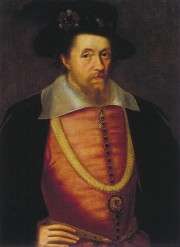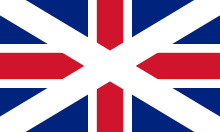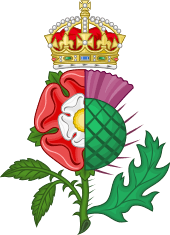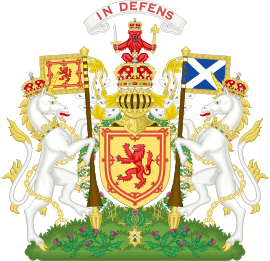Union of the Crowns
| Treaty of Windsor | 1175 |
|---|---|
| Treaty of York | 1237 |
| Treaty of Perth | 1266 |
| Treaty of Montgomery | 1267 |
| Treaty of Aberconwy | 1277 |
| Statute of Rhuddlan | 1284 |
| Treaty of Edinburgh–Northampton | 1328 |
| Treaty of Berwick | 1357 |
| Poynings' Law | 1495 |
| Laws in Wales Acts | 1535–42 |
| Crown of Ireland Act | 1542 |
| Treaty of Edinburgh | 1560 |
| Union of the Crowns | 1603 |
| Union of England and Scotland Act | 1603 |
| Act of Settlement | 1701 |
| Act of Security | 1704 |
| Alien Act | 1705 |
| Treaty of Union | 1706 |
| Acts of Union | 1707 |
| Personal Union of 1714 | 1714 |
| Wales and Berwick Act | 1746 |
| Irish Constitution | 1782 |
| Acts of Union | 1800 |
| Government of Ireland Act | 1920 |
| Anglo-Irish Treaty | 1921 |
| Royal and Parliamentary Titles Act | 1927 |
| N. Ireland (Temporary Provisions) Act | 1972 |
| Northern Ireland Assembly | 1973 |
| N. Ireland Constitution Act | 1973 |
| Northern Ireland Act | 1998 |
| Government of Wales Act | 1998 |
| Scotland Act | 1998 |
| Government of Wales Act | 2006 |
| Scotland Act | 2012 |
| Edinburgh Agreement | 2012 |
| Scotland Act | 2016 |
The Union of the Crowns (Scottish Gaelic: Aonadh nan Crùintean; Scots: Union o the Crouns) was the accession of James VI, King of Scots, to the thrones of England and Ireland, and the consequential unification for some purposes (such as overseas diplomacy) of the three realms under a single monarch on 24 March 1603. The Union of Crowns followed the death of Elizabeth I of England — the last monarch of the Tudor dynasty,[1] who was James's unmarried and childless first cousin once removed.
The Union was a personal or dynastic union, with the Crown of Scotland remaining both distinct and separate—despite James's best efforts to create a new "imperial" throne of "Great Britain". However, England and Scotland would continue to be sovereign states, sharing a monarch with Ireland (with an interregnum in the 1650s during the republican unitary state of the Commonwealth and the Protectorate), until the Acts of Union of 1707 during the reign of the last Stuart monarch, Queen Anne.[2]
Early unification
In August 1503, James IV, King of Scots, married Margaret Tudor, eldest daughter of Henry VII of England, and the spirit of the new age was celebrated by the poet William Dunbar in The Thrissil and the Rois.[3] The marriage was the outcome of the Treaty of Perpetual Peace, concluded the previous year, which, in theory, ended centuries of Anglo-Scottish rivalry. The marriage merged the Stuarts with England's Tudor line of succession, despite the improbability of a Scottish prince acceding the English throne at the time. However, many on the English side were concerned by the dynastic implications of matrimony, including some Privy Councillors. In countering these fears Henry VII is reputed to have said:
our realme wald receive na damage thair thorow, for in that caise Ingland wald not accress unto Scotland, bot Scotland wald acress unto Ingland, as to the most noble heid of the hole yle...evin as quhan Normandy came in the power of Inglis men our forbearis.
The peace did not last in "perpetuity"; it was disturbed in 1513 when Henry VIII, King of England and Lord of Ireland, who had succeeded his father four years before, declared war on France. In response France invoked the terms of the Auld Alliance, her ancient bond with Scotland. James duly invaded Northern England leading to the Battle of Flodden.
In the decades that followed, England's relations with Scotland were turbulent. By the middle of Henry's reign, the problems of the royal succession, which seemed so unimportant in 1503, acquired ever bigger dimensions, when the question of Tudor fertility – or the lack thereof – entered directly into the political arena. The line of Margaret Tudor was excluded from the English succession, though, during the reign of Elizabeth I concerns were once again raised. In the last decade of her reign it was clear to all that James VI of Scotland, great-grandson of James IV and Margaret Tudor, was the only generally acceptable heir.
Accession of James VI

From 1601, in the last years of Elizabeth I's life, certain English politicians, notably her chief minister Sir Robert Cecil,[4] maintained a secret correspondence with James to prepare in advance for a smooth succession. Cecil advised James not to press the matter of the succession upon the queen but simply to treat her with kindness and respect.[5] The approach proved effective: "I trust that you will not doubt," Elizabeth wrote to James, "but that your last letters are so acceptably taken as my thanks cannot be lacking for the same, but yield them you in grateful sort."[6] In March 1603, with the queen clearly dying, Cecil sent James a draft proclamation of his accession to the English throne. Strategic fortresses were put on alert, and London placed under guard. Elizabeth died in the early hours of 24 March. Within eight hours, James was proclaimed king in London, the news received without protest or disturbance.[7][8]
On 5 April 1603, James left Edinburgh for London, promising to return every three years (a promise he failed to keep, returning only once, in 1617, fourteen years after his initial departure),[7] and progressed slowly from town to town, in order to arrive in the capital after Elizabeth's funeral.[7] Local lords received James with lavish hospitality along the route; and James's new subjects flocked to see him, relieved above all that the succession had triggered neither unrest nor invasion.[9] As James entered London, he was mobbed. The crowds of people, one observer reported, were so great that "they covered the beauty of the fields; and so greedy were they to behold the King that they injured and hurt one another."[10] James's English coronation took place on 25 July, with elaborate allegories provided by dramatic poets such as Thomas Dekker and Ben Jonson, though the festivities had to be restricted because of an outbreak of the plague.[11] Nevertheless, all London turned out for the occasion: "The streets seemed paved with men," wrote Dekker. "Stalls instead of rich wares were set out with children, open casements filled up with women".[12]
Whatever residual fears many in England may have felt at the prospect of being ruled by a Scot, James's arrival aroused a mood of high expectation. The twilight years of Elizabeth had been a disappointment; and for a nation troubled for so many years by the question of succession, the new king was a family man who already had male heirs in the wing. But James's honeymoon was of very short duration; and his initial political actions were to do much to create the rather negative tone which was to turn a successful Scottish king into a disappointing English one. The greatest and most obvious of these was the question of his exact status and title. James intended to be King of Great Britain and Ireland. His first obstacle along this imperial road was the attitude of the English Parliament.
In his first speech to his southern assembly on 19 March 1604 James gave a clear statement of the royal manifesto:
What God hath conjoined let no man separate. I am the husband and the whole isle is my lawful wife; I am the head and it is my body; I am the shepherd and it is my flock. I hope therefore that no man will think that I, a Christian King under the Gospel, should be a polygamist and husband to two wives; that I being the head should have a divided or monstrous body or that being the shepherd to so fair a flock should have my flock parted in two.[13]
Parliament may very well have rejected polygamy; but the marriage, if marriage it was, between the realms of England and Scotland was to be at best morganatic. James's ambitions were greeted with very little enthusiasm, as one by one MPs rushed to defend the ancient name and realm of England. All sorts of legal objections were raised: all laws would have to be renewed and all treaties renegotiated. For James, whose experience of parliaments was limited to the stage-managed and semi-feudal Scottish variety, the self-assurance — and obduracy — of the English version, which had long experience of upsetting monarchs, was an obvious shock. He decided to side-step the whole issue by unilaterally assuming the title of King of Great Britain by a Proclamation concerning the Kings Majesties Stile on 20 October 1604 announcing that he did "assume to Our selfe by the cleerenesse of our Right, The Name and Stile of KING OF GREAT BRITTAINE, FRANCE AND IRELAND, DEFENDER OF THE FAITH, &c." .[14] This only deepened the offence. Even in Scotland there was little real enthusiasm for the project, though the two parliaments were eventually prodded into taking the whole matter 'under consideration'. Consider it they did for several years, never drawing the desired conclusion.
Opposition to the union
In Scotland there were early signs that many saw the risk of the "lesser being drawn by the greater", as Henry VII once predicted. An example before Scottish eyes was the case of Ireland, a kingdom in name, but – since 1601 – a subject nation in practice. John Russell, lawyer and writer, an initial enthusiast for "the happie and blissed Unioun betuixt the tua ancienne realmes of Scotland and Ingland" was later to warn James:
Lett it not begyne vith ane comedie, and end in ane tragedie; to be ane verball unioun in disparitie nor reall in conformity…thairby, to advance the ane kingdome, to great honor and beccome forȝetfull of the uther, sua to mak the samyn altogidder solitat and desoltat qhilk cannot stand vith your Majestie's honor. As god hes heichlie advanceit your Majestie lett Scotland qhilk is ȝour auldest impyir be partakeris of ȝour blissings.
These fears were echoed by the Scottish Parliament. Its members were telling the king that they were "confident" that his plans for an incorporating union would not prejudice the ancient laws and liberties of Scotland; for any such hurt would mean that "it culd no more be a frie monarchie". James attempted to reassure his new English subjects that the new union would be much like that between England and Wales, and that if Scotland should refuse "he would compel their assents, having a stronger party there than the opposite party of the mutineers". In June 1604 the two national parliaments passed acts appointing commissioners to explore the possibility of "a more perfect union". James closed the final session of his first parliament with a rebuke to his opponents in the House of Commons — "Here all things suspected...He merits to be buried in the bottom of the sea that shall but think of separation, where God had made such a Union".
The Union Commission made some limited progress, on discrete issues such as hostile border laws, trade and citizenship: the borders were to become the "middle shires". Free trade proved contentious, as did the issue of equal rights before the law. Fears were openly expressed in the Westminster Parliament that English jobs would be threatened by all the poor people of the realm of Scotland, who will "draw near to the Sonn, and flocking hither in such Multitudes, that death and dearth is very probable to ensue". The exact status of the post nati, those born after the Union of March 1603, was not decided by Parliament, but in the courts by Calvin's Case (1608), which extended property rights to all the King's subjects in English common law.
National animosity
Scottish aristocrats and other place seekers made their way to London, to compete for high positions in government. Several years later Sir Anthony Weldon was to write that
Scotland was too guid for those that inhabit it, and too bad for others to be at the charge of conquering it. The ayre might be wholesome, but for the stinking people that inhabit it...Thair beastis be generallie small (women excepted) of which sort there are no greater in the world.
A wounding observation came in the comedy Eastward Ho, a collaboration between Ben Jonson, George Chapman and John Marston. In enthusing over the good life to be had in the colony of Virginia it is observed:
And then you shal live freely there, without Sergeants, or Courtiers, or Lawyers, or Intelligencers – onely a few industrious Scots perhaps, who indeed are disperst over the face of the whole earth. But as for them, there are no greater friends of Englishmen and England, when they are out an't, in the world, then they are. And for my part, I would a hundred thousand of them were there, for wee are all one Countrymen now, yee know; and wee shoulde finde ten times more comfort of them there, then wee do here.
Anti-English satires proliferated, and in 1609 the king had an act passed, promising the direst penalties against the writers of "pasquillis, libellis, rymis, cockalanis, comedies and sicklyk occasiones whereby they slander and maligne and revile the estait and countrey of England..."
In October 1605 the Venetian ambassador in London noted "the question of the Union will, I am assured, be dropped; for His Majesty is now well aware that nothing can be effected, both sides displaying such obstinacy that an accommodation is impossible; and so his Majesty is resolved to abandon the question for the present, in hope that time may consume the ill-humours."
Symbols of the union
King James devised new coats of arms, a uniform coinage and the like. The creation of a national flag proved contentious, designs acceptable to one side typically offending the other. James finally proclaimed the new Union Flag on 12 April 1606: Scots who saw in it a St. George's Cross superimposed upon a St. Andrew's Saltire sought to create their own 'Scotch' design which saw the reverse superimposition take place. (This design was used in Scotland until 1707.) For years afterwards vessels of the two nations continued to fly their respective "flags", the royal proclamation notwithstanding. The Union Flag only entered into common use under Cromwell's Protectorate.
-

Arms of the Kingdom of Scotland, 1565–1603.
-
.svg.png)
Arms of the Kingdom of England, 1558–1603.
-
.svg.png)
Arms of the Kingdom of Ireland, 1541–1603.
-
.svg.png)
Arms of the Kingdom of Scotland, 1603–1707.
-
.svg.png)
Arms of the Kingdom of England and the Kingdom of Ireland, 1603–1707.
-

The flag of the Kingdom of Scotland.
-

The flag of the Kingdom of England.
-

Union Flag used in the Kingdom of Scotland from the early 17th century to 1707.
-
.svg.png)
Union Flag used in the Kingdom of England, 1606–1707.
-

The Tudor rose dimidiated with the Scottish thistle, James used this device as a royal heraldic badge.
Notes
- ↑ John Daniel McVey. "The Union of The Crowns 1603 - 2003". Uotc.scran.ac.uk. Retrieved 2013-10-25.
- ↑ David Lawrence Smith, A History of the Modern British Isles, 1603–1707: The Double Crown (1998), Chapter 2
- ↑ Conlee, John (ed.) (2004). William Dunbar: The Complete Works. Kalamazoo, Michigan: Medieval Institute Publications. Retrieved 26 August 2007.
- ↑ James described Cecil as "king there in effect". Croft, p 48.
- ↑ Cecil wrote that James should "secure the heart of the highest, to whose sex and quality nothing is so improper as either needless expostulations or over much curiosity in her own actions, the first showing unquietness in yourself, the second challenging some untimely interest in hers; both which are best forborne." Willson, pp 154–155.
- ↑ Willson, p 155.
- 1 2 3 Croft, p 49
- ↑ Willson, p 158
- ↑ Croft, p 50.
- ↑ Stewart, p 169.
- ↑ Stewart, p 172.
- ↑ Stewart, p 173.
- ↑ James I, speech to the Westminster parliament, 19 March 1603, e.g. in King James VI and I: Political Writings, ed. Johann Sommerville, Cambridge Texts in the History of Political Thought, Cambridge: Cambridge University Press 1995, 132–46, here 136.
- ↑ Francois Velde. "Royal Arms, Styles and Titles of Great Britain". Heraldica.org. Retrieved 2013-10-25.
References and further reading
- Brown, Keith M. (1994). "The vanishing emperor: British kingship and its decline, 1603–1707". In in Roger A. Mason (ed.). Scots and Britons: Scottish Political Thought and the Union of 1603. Cambridge: Cambridge University Press. ISBN 0-521-42034-2.
- Croft, Pauline (2003). King James. Basingstoke and New York: Palgrave Macmillan. ISBN 0-333-61395-3.
- Ferguson, William (1977). Scotland's Relations with England: A Survey to 1707. Edinburgh: J. Donald. ISBN 0-85976-022-7.
- Galloway, Bruce (1986). The Union of England and Scotland, 1603–1608. Edinburgh: J. Donald. ISBN 0-85976-143-6.
- Galloway, Bruce, & Levack, Brian, ed., (1985) The Jacobean Union, Six tracts of 1604, Edinburgh, Scottish History Society. ISBN 0-906245-06-0
- Lee, Maurice, Jr. (2003). The "Inevitable" Union and Other Essays on Early Modern Scotland. East Linton, East Lothian: Tuckwell Press. ISBN 1-86232-107-8.
- Marshall, T. (July 2005). "United We Stand?". BBC History magazine.
- Mason, Roger A. (ed.) (1987). Scotland and England, 1286–1815. Edinburgh: J. Donald. ISBN 0-85976-177-0.
- Stewart, Alan (2003). The Cradle King: A Life of James VI and I. London: Chatto & Windus. ISBN 0-7011-6984-2.
- Willson, David Harris ([1956] 1963 ed). King James VI & 1. London: Jonathan Cape Ltd. ISBN 0-224-60572-0.
- Wormald, Jenny (1994). "The Union of 1603", in Scots and Britons, op cit.
External links
- Union of the Crowns 400th anniversary educational website
- Ulster-Scots Agency: 1603 — The Union of the Crowns (.doc format)

